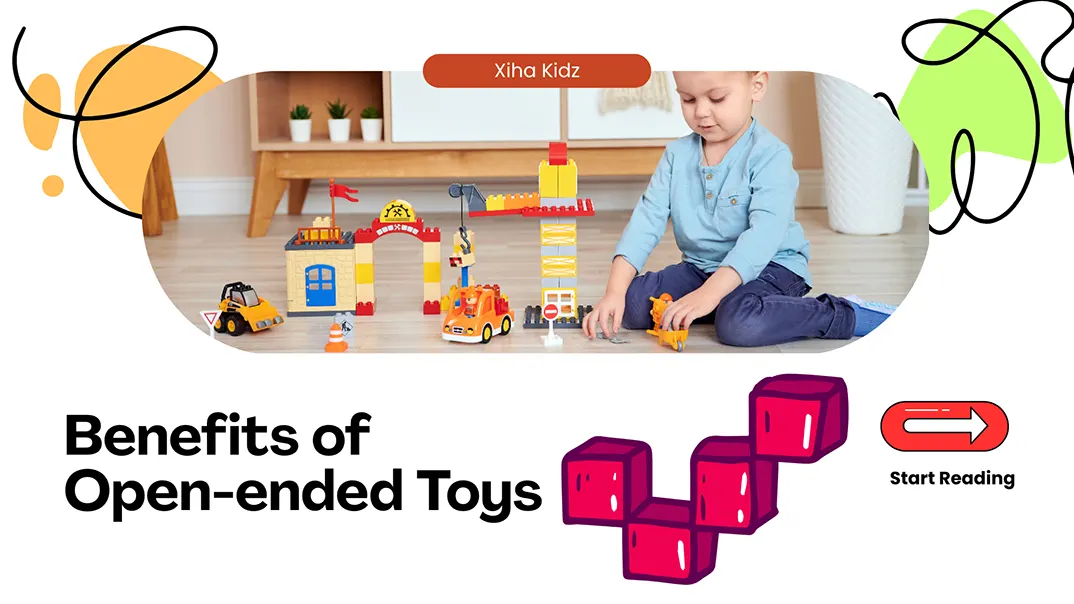Tummy time is the practice of placing a baby on their stomach while they are awake and supervised. This simple yet powerful activity helps infants strengthen the muscles in their neck, shoulders, arms, and back. It lays the foundation for key milestones such as rolling, crawling, and sitting up.
According to the American Academy of Pediatrics, babies should begin tummy time as early as their first days at home. Sessions can start with only a few minutes and gradually increase as the baby becomes stronger. The Centers for Disease Control and Prevention also highlights tummy time as an essential daily activity that prevents flat spots on the head and promotes healthy physical development.
Although tummy time can be challenging at first, especially if a baby becomes fussy or frustrated, it does not have to be a struggle. With the right strategies, it can become a fun and interactive bonding experience between babies and caregivers.
The Benefits of Tummy Time
From the earliest weeks of life, placing a baby on their stomach while they are awake and supervised lays the foundation for healthy development. It helps build strength, encourages sensory exploration, and supports early brain growth. Far from being just a passing parenting trend, tummy time is a medically recommended practice with long-lasting benefits.

1. Strengthens Core, Neck, and Shoulder Muscles
When babies lift their heads and push up during belly-down time, they are engaging vital muscles in the neck, shoulders, arms, and core. These movements help them gain the stability and control needed for sitting, crawling, and eventually walking. Regular tummy time lays the groundwork for strong motor development.
2. Promotes Healthy Motricité
Every push, kick, and reach your baby makes while on their tummy supports coordination and balance. These small but consistent efforts help develop gross motor skills and prepare your baby to roll, crawl, and explore their environment with confidence.
3. Prevents Flat Head Syndrome (Positional Plagiocephaly)
Because many infants spend a lot of time lying on their backs, they may develop flat spots on their heads. Tummy time provides relief by reducing continuous pressure on the skull. Alternating positions during the day helps maintain a natural head shape and supports healthy posture.
4. Encourages Sensory and Visual Development
During tummy time, babies look around, focus on faces or toys, and explore textures with their hands. This promotes visual tracking, spatial awareness, and sensory exploration. The activity also stimulates curiosity and early problem-solving as babies begin to reach for objects and respond to their environment.
5. Builds Confidence and Emotional Connection
Tummy time is also a bonding experience. When parents or caregivers get down on the floor and interact, babies feel supported and encouraged. These positive moments help strengthen emotional attachment and give babies confidence to keep trying, even when the position feels new or challenging.
6. Supports Early Milestones
Consistent tummy time helps babies achieve major milestones sooner. It encourages head control around two to three months, rolling at four to six months, and crawling between six and ten months. Each stage builds upon the strength and balance developed during belly-down time.
Découvrez notre gamme complète de produits
Accédez à notre catalogue complet comprenant des meubles et des équipements de jeu de qualité supérieure pour les jardins d'enfants et les écoles.
When to Start Tummy Time?
Tummy time can begin as early as the first day home from the hospital, as long as the baby is full-term, healthy, and alert during wakeful periods. For most infants, starting within the first week helps build comfort and familiarity with the position, even if it’s just for a few minutes at a time.
However, some situations may require special attention. Premature babies, those with low muscle tone, reflux issues, or other medical concerns might need a modified approach. In these cases, it’s essential to consult with a pediatrician or pediatric physical therapist before starting tummy time. They can provide tailored recommendations based on the baby’s specific needs and developmental readiness.
How Long Should Tummy Time For?
In the early days, tummy time doesn’t need to last long to be effective. Just a few minutes at a time, several times a day, is a great place to start. The goal is not to push for long sessions immediately but to build endurance and comfort gradually. Each baby develops at their own pace, so starting small and increasing over time is both safe and effective.

- Newborn to 2 Months
In the early weeks, aim for short tummy time sessions lasting about 2 to 3 minutes, two to three times per day. At this age, babies are still adjusting to life outside the womb and may find the position unfamiliar. Gentle tummy time on a parent’s chest or across the lap is a great way to begin. - 2 to 4 Months
As your baby gains strength and better head control, increase tummy time to around 10 to 15 minutes each day, split into several short sessions. A soft blanket, high-contrast toys, or a mirror can help keep them engaged and curious while they explore this new position. - 4 to 6 Months
By this stage, babies are usually more confident during tummy time. Try to offer 20 to 30 minutes spread throughout the day. Many babies enjoy playing on their stomachs at this point, especially when caregivers interact with them on the floor or provide simple toys to reach and grab. - 6 Months and Older
Once babies are rolling and beginning to sit, they may naturally spend more time on their stomachs during play. There is no strict maximum, and tummy time can continue as part of their overall movement and exploration. Aim to keep offering time on the tummy through engaging activities to continue strengthening their body and coordination.
How to Make Tummy Time Fun and Engaging for Your Baby?
Tummy time becomes enjoyable when it combines movement, play, and connection. Use toys, mirrors, music, and your own presence to turn each session into a playful and comforting experience. The goal is to help your baby build strength and confidence while having fun on their tummy.
1. Choosing the Right Tummy Time Positions
The right tummy time position can make a big difference in how comfortable and enjoyable the experience is for your baby. By offering a variety of supported and developmentally appropriate positions, you can ease your child into belly-down time gradually and make it part of your bonding routine.

- Tummy to Chest
Place your baby on your chest while you recline. This position encourages close bonding and helps your baby practice lifting their head in a calm, familiar environment. - Tummy Down Carry (Also Known as the Football Hold)
Hold your baby along your forearm with their tummy facing down and one hand supporting their head. This is especially useful for newborns who resist floor time. It also helps release trapped gas. - Floor Tummy Time
As your baby becomes more comfortable, place them on a soft blanket or mat on the floor. Add mirrors or toys to encourage reaching, pushing, and head-turning. This is the most active and free-form version of tummy time and supports physical exploration.
2. Create a Comfortable Tummy Time Environment
A comfortable environment makes tummy time more inviting for your baby. Use a clean, soft surface like a tummy time mat, firm blanket, or carpeted area to support movement without slipping. Choose a quiet, well-lit space with a baby-safe mirror nearby to keep things interesting. Make sure your baby is dressed in soft, flexible clothing that allows them to move freely. When the setting feels safe and cozy, babies are more likely to relax, explore, and enjoy their time on the floor.



3. Offer Tummy Time Toys
Introducing a few soft, colorful, and safe toys can make tummy time more exciting. Place the toys just within reach to encourage your baby to stretch and reach. This promotes upper body strength and coordination. Toys with different textures, sounds, or visual contrasts can hold your baby’s attention and make tummy time more interactive.



Transformez votre salle de classe avec des solutions de mobilier personnalisées
4. Start with You
Your presence is your baby’s greatest source of comfort. Begin tummy time by lying down face to face with your baby. Talk gently, smile, or sing a soft song. This kind of interaction creates a sense of connection and security. When babies see a familiar face and hear a calming voice, they are more likely to stay relaxed and engaged during tummy time.
5. Add Music or Gentle Movement
Soft music or a familiar lullaby can calm a fussy baby during tummy time. You can also try laying your baby on your chest while reclining and gently breathing together. These quiet, rhythmic moments help your baby associate tummy time with comfort and closeness. For very young infants, the combination of skin contact and gentle motion can ease the transition into more independent tummy time.
6. Change the Scenery
Babies are naturally curious, and a change of environment can help keep tummy time fresh and fun. Try placing your baby near a window, in a new room, or even outside on a safe, soft surface. New sights, sounds, and lighting provide extra stimulation. Always make sure the surface is clean, safe, and supervised.
Tummy Time Safety Tips and Precautions
Supervise at All Times: Only do tummy time when your baby is awake and monitored closely.
Use a Firm, Flat Surface: Place your baby on a stable and clean play area.
Wait After Feeding: Give 20–30 minutes after a meal before starting tummy time.
Watch for Discomfort: Stop if your baby seems upset or overly tired.
Adjust to Your Baby’s Needs: Use small supports and keep sessions short at first.
What If My Baby Doesn’t Like Tummy Time?
If your baby cries or pushes back during tummy time, don’t worry. Discomfort in this position is common, especially in the early weeks when babies have not yet developed the strength to lift and adjust their heads.

Tummy time doesn’t have to mean putting your baby on a mat and setting a timer. You can ease into it in ways that feel more natural. Try laying your baby on your chest while you lean back and chat with them. Or rest them belly-down on your lap while gently rubbing their back. These moments count, and they often feel more comforting than being on the floor.
It also helps to choose the right time. A full belly and a sleepy mood don’t mix well with tummy time. Instead, pick a calm, alert moment and start with just a few seconds. If your baby starts to fuss, no problem. Pick them up, cuddle, and try again later. No pressure.
Every baby has their own pace. Some warm up quickly, others take a little longer. But if you notice that your baby avoids lifting their head, seems unusually stiff or floppy, or becomes very distressed each time, it is always a good idea to talk to your pediatrician. They can help you figure out if your baby needs extra support or a different approach.
Tummy Time Activities for Babies
Providing a variety of tummy time activities can help babies stay interested, reduce fussiness, and make each session more productive. These simple ideas add fun and sensory stimulation to support your baby’s physical and cognitive development.

1. Jeu de miroir
Place a baby-safe mirror in front of your baby during tummy time. Babies love watching their reflections and will try to lift their heads to look closer. This activity promotes visual tracking, neck strength, and curiosity about faces.
2. Toy Reach and Grab
Lay colorful, soft toys just within your baby’s reach. Encourage them to stretch, push, and grab. Reaching for toys strengthens the shoulders and arms while improving hand-eye coordination and problem-solving skills.
3. High-Contrast Visuals
Place black-and-white cards, patterns, or books in front of your baby. Newborns are especially drawn to high-contrast colors, which stimulate vision and encourage longer periods of focus and engagement during tummy time.
4. Music and Gentle Movement
Play soft, calming music or sing simple songs while your baby lies on their tummy. Rhythm and sound help create a soothing environment and encourage babies to move their arms and legs in response to the beat.
5. Textured Play Mat Exploration
Use a soft mat with varied textures (smooth, crinkly, or bumpy) to give your baby new sensory experiences. Feeling different surfaces under their hands and arms strengthens touch awareness and sensory learning.
6. Storytime on the Floor
Lie next to your baby and read short, rhythmic stories. The sound of your voice captures attention and makes tummy time feel calm and nurturing while promoting early language development.
7. Reaching for You
Lie in front of your baby and call their name softly. Encourage them to lift their head or reach toward your face. This simple interaction boosts social connection and strengthens neck and arm muscles through motivation and eye contact.
8. Tummy Time with Siblings or Peers
If there are older siblings or other babies, let them join in. Babies love watching other children move and play, which encourages them to lift their heads and imitate movements.
9. Follow the Toy
Hold a soft toy and move it slowly from side to side in front of your baby’s face. This encourages them to lift their head and move it from one side to the other, improving both muscle control and visual tracking.
Transformez votre salle de classe avec des solutions de mobilier personnalisées
FAQ
Can tummy time help prevent flat spots on my baby’s head?
Yes. Tummy time reduces the pressure on the back of your baby’s head and helps promote a well-rounded head shape, especially when combined with supervised side-lying and regular repositioning during awake time.
Is it okay if my baby falls asleep during tummy time?
No. If your baby falls asleep while on their tummy, gently move them onto their back. Tummy time should only happen when your baby is awake and being closely supervised to ensure safety.
Is 2 months old too late to start tummy time?
No, it is not too late to start tummy time at 2 months. While it is ideal to begin as early as possible, your baby can still start now and benefit from it. The key is to begin gently and gradually increase the time as your baby becomes more comfortable.
If my baby has reflux or vomits a lot, should I put them on their tummy?
Yes, but wait at least 20 to 30 minutes after feeding. Tummy time is still helpful, but avoid it right after meals. Try gentler positions like tummy on your chest, legs, or on a gym ball. If reflux is severe, talk to your pediatrician.
At what age is it no longer necessary to put my baby on their tummy?
Once your baby can roll both ways, sit up independently, and move around confidently, usually around 6 to 7 months, dedicated tummy time becomes less necessary. By then, your baby is likely spending plenty of time on their tummy naturally during play. However, it is still beneficial to encourage floor play in various positions to support ongoing development.
Conclusion
Tummy time is a simple daily practice that plays a meaningful role in your baby’s physical, sensory, and emotional development. By spending short, consistent moments on their tummy, babies strengthen important muscles, build coordination, and explore the world from a new perspective. Starting early, following your baby’s cues, and choosing positions that match their comfort level all help create a routine that feels natural and enjoyable.
As you experiment with toys, mirrors, music, or simple moments of connection, tummy time transforms from a challenging position into an opportunity for bonding and discovery. With patience and gentle encouragement, you can help your baby grow stronger while enjoying meaningful time together.







